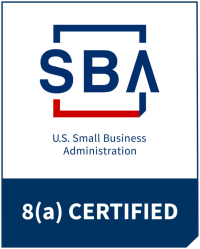We all know what spam looks like when we receive it in our inbox. But, you may be an accidental spammer yourself; and, getting blocked by ISPs and email programs can put a serious dent in your message. Modern anti-spam programs are fairly sophisticated, and it’s worth your while to understand how to avoid the filters. I will try to break it down to its simplest terms.
There are several things that the spam filters look at when scouting for spam. Each item has a point value; so, a single issue may or may not get your email tagged as spam; but, if the sum total of the spam points is greater than the threshold, it will be considered spam. You, respectively, will be considered a spammer. If you can answer ‘yes’ to any of these questions about a particular email, you may be a spammer:
- Subject: Are there “spammy” words or phrases (i.e. free, mortgage, insurance, act now, casino, coupons, open immediately)? Is it written in ALL CAPS? Is it misleading?
- To: Did you just use an email address without a person’s actual name?
- Message: Are there “spammy” words or phrases? Have you used expletives or overused exclamation points (!!!)? Have you used numbers or characters in place of letters (i.e. V1AGRA, SW!VEL, etc.)? Is HTML improperly coded? Are you missing a plain text version? Have you sent a giant graphic (or a multitude of images) and little or no text?
- Links: Does your message contain a link to a domain that is blacklisted?
- IP Address: Is the sending server on a blacklist? (This may not be your fault. If a spammer is using your ISP or email service provider, and his server is within your server’s IP Range, all your emails could get blocked too.)
- Sender: Is the sender NOT in the recipient’s contact list?
- From: Does the email address look anonymous or faked?
- Reputation: Have other filters reported the same message (or sender) as spam? Has one or more recipients marked your email as junk?
- Email List: Did you buy an email list?
- Unsubscribe: Did you fail to make unsubscribing a simple process (like the click of a link)?
As you can see, there are a lot of criteria to consider in the spam realm; but, don’t let that stop you from using email to reach out to your contacts. Combined with other online marketing endeavors, email marketing still has its place. You just need to know the rules of the CAN-SPAM Act.
One of the easiest and best ways to keep your hands clean, is to use an email sending service. Reputable companies like MailChimp and Mad Mimi guard their reputation by putting mechanisms in place that protect against spammy practices. Since that is their business, they want to make sure that all users comply, and their service and users don’t get penalized. They will create the plain text version of the email for you, and include an unsubscribe link. They make it easy to manage your contact list as well.
Every now and then, we run into a business owner that is sending email “blasts” using their personal email account instead of using a service. That is a clear rule violation of virtually every host and ISP; so, it is just a matter of time before they are denied service altogether. The solution is simple. Use an email sending service. Not only do they take care of part of the work for you (including layout), there is a nice repository of emails and tracking data to refer to when evaluating the value of what you are sending.
You want your emails to not only reach the intended inboxes, but to reach those who are receptive to the information and don’t mark it as junk. You should avoid buying a list, or using email addresses gathered from Facebook, Twitter or LinkedIn because you do not have the express permission of those people to send email to them. The best method to build your contact list is the old fashioned way using prospecting and creative marketing. It will take time, but it will be worth it.
Just like any other piece of marketing collateral, it is critical that your message is clear and purposeful, and that it reaches the desired audience. You don’t just want eyes on your email, you want clients or customers who appreciate your business, engage with the content and spread the word.




